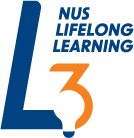Objectives
Knowledge and understandingHaving successfully completed the course, students will be able to understand:
- Challenges in very deep submicron billion gate design;• Major process technologies used in current designs;• Most important approaches for modern IC design;• Difference between SoC and SiP;• Motivation behind SoC and SiP designs;• Major cost in development of modern SoC/SiP solutions.Subject specific intellectual skillsHaving successfully completed the course, students will be able to:• Understand major process steps in building MOSFET transistors;• Appreciate the advantages of design reuse;• Identify the importance of hardware/software co-design, clock and low power design;• Appreciate the significance of leakage current, design for manufacturability, testability and chip reliability;• Realise the role of Electronic Design Automation (EDA) tools in IC design;• Distinguish the various tasks and personnel required in SoC/SiP design project;• Appreciate the design flow of an Application-specific Integrated Circuit (ASIC) chip and the complexity and challenges of VLSI physical design.Subject specific practical skillsHaving successfully completed the course, students will be able to:• Demonstrate knowledge of the major steps in ASIC chip construction;• Explain the characteristics of good design flow and identify the two major aspects of ASIC design flow;• Recognise the important steps in cell-based ASIC design methodology;o System-level study;o RTL system level description;o Functional verification;o Logic synthesis;o Physical synthesis;• Demonstrate knowledge in the processes related to VLSI physical;o Floor planning;o Placement;o Routing;o Power network;o Clock network;o Design for testability (DFT);o Parasitic extraction and delay calculation;o Signal integrity;o Verification;o Tapeout.


